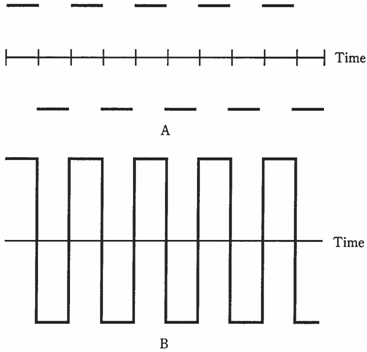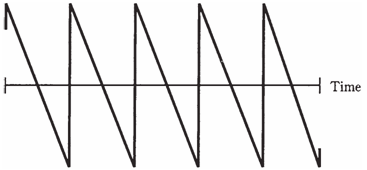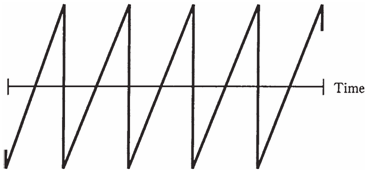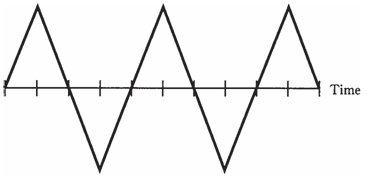Sawtooth waves:
Some alternating current waves rise and fall in straight lines as seen on the oscilloscope screen. The slope of line indicates how fast the magnitude is changing. Such waves are known as saw- tooth waves because of their appearance.
Sawtooth waves can be generated by certain electronic test devices. These waves provide ideal signals for the control purposes. Integrated circuits are wired so that they produce sawtooth waves having desired shape.
Fast-rise, slow-decay
In the Figure one form of sawtooth wave is shown. The positive going slope is extremely steep, as with a square wave, but negative going slope is gradual. The period of wave is the time between points at the identical positions on 2 successive pulses.

Figure-- At A, a perfect square wave. At point B, the more common rendition of the square wave.

Figure-- Fast rise, slow decay sawtooth.
Slow-rise, fast-decay
Another form of sawtooth wave is the opposite, with the gradual positive going slope and a vertical negative going transition. This type of wave is called as ramp, because it looks like an incline going upwards. This waveshape is useful for scanning in television sets and the oscilloscopes. It tells electron beam to move, or trace, at a constant speed from left to right during upwards sloping part of wave. Then it retraces, or brings electron beam back, at the high speed for the next trace.

Figure-- Slow-rise, fast-decay sawtooth, also called as ramp.
Variable rise and decay
You can guess that sawtooth waves can have rise and decay slopes in infinite number of different combinations. One example is shown in Figure given below. In this particular case, the positive going slope is same as negative going slope. This is a triangular wave.

Figure-- Triangular wave.